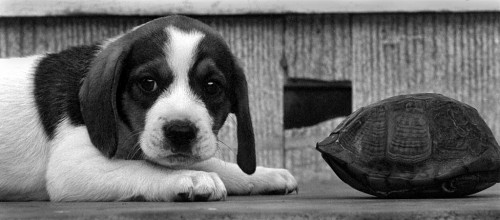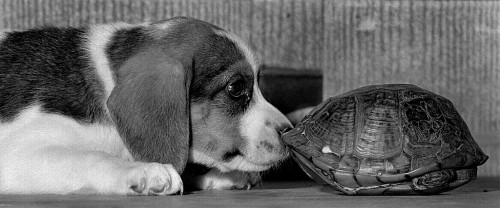Every day there were tons of rolls of blank newsprint waiting for ink to be squirted on them. Some days you had assignments to shoot photos that would illustrate stories. Other days, the editor would ask, “Got any wild art?”
Wild art – sometimes called CLO, for Cut Lines Only – was a photo or photos that would stand alone without a story.
Photographer wasn’t human
All newspaper photographers have to be generalists who can do a competent job shooting whatever arises, but most of them have things they do better than others. I had one guy who had an uncanny ability to shoot sports. He could read the plays better than the athletes; be where the action was going to happen; nail the ball, the number and the action, perfectly exposed and tack-sharp. There was some speculation that he wasn’t human.
Others were great at lighting. They could make interiors and food come alive. A few were good at coming up with illustrations for stories that didn’t lend themselves to straight journalistic photography.
I was most comfortable shooting portraits, documentary picture stories and spot news.
Animal photos were the exception
 I was lousy at feature photos and wild art. I always wanted to turn feature situations into stories. Very seldom did I ever stoop so low as to shoot animal photos like these.
I was lousy at feature photos and wild art. I always wanted to turn feature situations into stories. Very seldom did I ever stoop so low as to shoot animal photos like these.
Tuned to a different frequency
An unsolicited portfolio arrived at the office when I was trying desperately to fill the fifth of five positions that had just come open when the staff was raided and a husband-and-wife team left for a bigger paper. The applicant was someone we had never heard of, working at a small paper we had never heard of, but his feature photos were phenomenal. So phenomenal, in fact, that the chief photographer and I grilled him hard. “We don’t set up photos here, and your pictures look, to be blunt, ‘too good to be true.’ How did you happen to shoot photos X, Y and Z”
“I just get these feelings,” he said. “I think, if I stand in this place, it’s like I can see in my mind what’s going to happen.”
It turned out to be true. It was like he was tuned to a different frequency than the rest of us. If he had been as good at picking lottery numbers as he was in being able to predict what was going to walk into his camera frame, he’d have been rich.


With you there I preferred spot news,sports picture stories and street features. I dreaded grip and grin and check passings, and the cute-kid stuff. that stuff was only space fillers and had no other use. Nice critter shot though.
They say Henri Cartier-Bresson was that way. He had the knack of anticipation and would position himself accordingly. Once he was positioned he knew where to look and when to press the shutter. The people who are able to do that consistently are few and far between. I would like to think, however, that it is a skill the rest of us might be able to develop to some lesser degree if we are observant and patient.
I am really enjoying your posts. Keep up the good work.
There’s a difference between the ability to capture peak action and Cartier-Bresson’s “decisive moment.”
Peak action is mostly controlled by the subject who is hitting the ball, jumping over the hurdle, or “doing something.” Composition is less important than capturing the event.
“Photography is not like painting,” Cartier-Bresson told the Washington Post in 1957. “There is a creative fraction of a second when you are taking a picture. Your eye must see a composition or an expression that life itself offers you, and you must know with intuition when to click the camera. That is the moment the photographer is creative,” he said. “Oop! The Moment! Once you miss it, it is gone forever.”
That’s the monkey on the photographer’s back. I learned early on that if you don’t shoot the photo when you see it, it’s gone forever. You can go back there tomorrow, but the magic has drained off. The light is different; the angle is different; whatever made it work the first time is missing.
I did a story on the train that went from Miami to Chicago. The reporter thought he had enough by the time we hit the Florida line and he couldn’t undertand why I grew increasingly cranky on the return trip because I didn’t feel like I had the photos I needed.
“Hear the clickty-clack of the rails under our feet? That sound just reinforces that this trip is coming to an end and I have just that much less time to get THE photo,” I tried to explain.
Photographers live in a thousandth of a second world.
What I find interesting is looking at some of my photos and finding that they are hard to crop because everything in them is important, even people or things at the edge of the frame that I wasn’t conscious of when I clicked the shutter.
It used to be a sign of conceit (or pride) to print your photos “full frame,” with the black border surrounding the photo to indicate that it hadn’t been cropped outside the camera.
Greg, I think we can learn this to some degree. However, there are people out there that just have a talent for certain things. I know that since I have gotten into Photography (landscape & wildlife) I see things I never saw before.